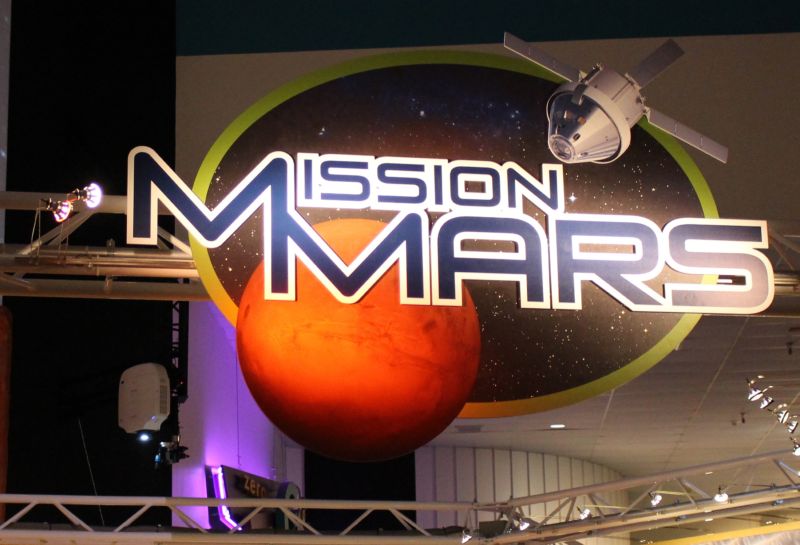
I wasn’t sure what to expect when walking into the new Mars exhibit at Space Center Houston. For technical and financial reasons, as well as a flagging national commitment, NASA just doesn’t seem like it will send humans to Mars any time soon. The space agency’s “Journey to Mars” is long on hype, but short on concrete plans and funding. With that said, the thought of actually landing on Mars remains hard to resist.
The museum had invited Ars for a behind-the-scenes tour of Mission Mars in January, just before it opened as a permanent exhibit. Although some final work remained in progress, the exhibit was far enough along to conclude—happily—that NASA’s Journey to Mars will not be forced down the throats of visitors. Rather, the museum recognizes that NASA’s priorities can change as new presidential administrations come and go.
“At some point humans are going to have to leave Earth,” explained Paul Spana, the museum’s exhibits manager. “It’s in the nature of humans to go beyond, into the next valley. We’ve been to the Moon. Hopefully we’ll be going back soon. But as we eventually expand into the solar system, the next logical place to go will be Mars. We want to help people understand what that might be like.”
-
This looks like Mars. But do not be fooled! This is not actual Martian rock.Eric Berger
-
This is, however, and you can touch it!Eric Berger
-
Here's the big 4K video screen. Note the incoming landing craft.Eric Berger
-
Here's a version of NASA's Vegetable Production System (lower left) which is currently growing veggies on the International Space Station.Eric Berger
-
Why Mars?Eric Berger
-
Paul Spana, exhibits manager for Space Center Houston.Eric Berger
-
The exhibit, of course, does pay some homage to the NASA's exploration program and the SLS rocket.Eric Berger
-
Here, they're constructing a one-eighth model of the SLS rocket, which is still 45 feet tall.Eric Berger
-
And here's a space shuttle main engine, which will power the SLS rocket into space.Eric Berger
-
Oh look, it's the Orion capsule.Eric Berger
-
The new Mars exhibit looks forward, while Space Center Houston also has displays on current NASA hardware.Eric Berger
-
As well as its storied past.Eric Berger
Mission Mars includes a multi-story 4K video that shows a virtual surface of Mars and depicts what a human landing might look like. Toward the end of the video, two astronauts emerge from the landing craft to explore. “When I created this video I had just one astronaut coming out,” Spana said. “And Johnson Space Center said ‘No, we’ll never send just one astronaut out by themselves. You’ve got to add a second astronaut’.”
The video plays in the background as displays showcase what we know about Mars, how we might travel there, and why humans will go one day. One interactive feature allows visitors to leave their footprints in a digitally rendered surface of Mars. Three Martian meteorites are on loan from a private collector in San Antonio, and visitors can also touch a Martian meteorite borrowed from NASA’s Astromaterials lab, across the street at Johnson Space Center. Because only about 150 meteorites have been confirmed as originating from Mars, seeing four at a time is a rare treat.
For a long time, Space Center Houston had a full-size replica of the space shuttle’s nose cone towering at the back of its main hall. This made sense, considering that Space Center Houston is the visitor’s center for JSC, the home of the space shuttle. But now that the shuttle program has ended, said Spana, the time has come to move on. (As an homage to the shuttle, the mock shuttle Independence is now displayed atop NASA’s original Shuttle Carrier Aircraft, a modified Boeing 747 jet, outside the space center).
Now the permanent Mars exhibit has taken this prime position. “We knew the shuttle program was coming to an end, and we wanted to be able to tell a story about the future. NASA is not going to Mars next year, but we’re going to go there someday,” Spana said. And now anyone can get as close to Mars as any human will, any time soon, by visiting the museum.
reader comments
13